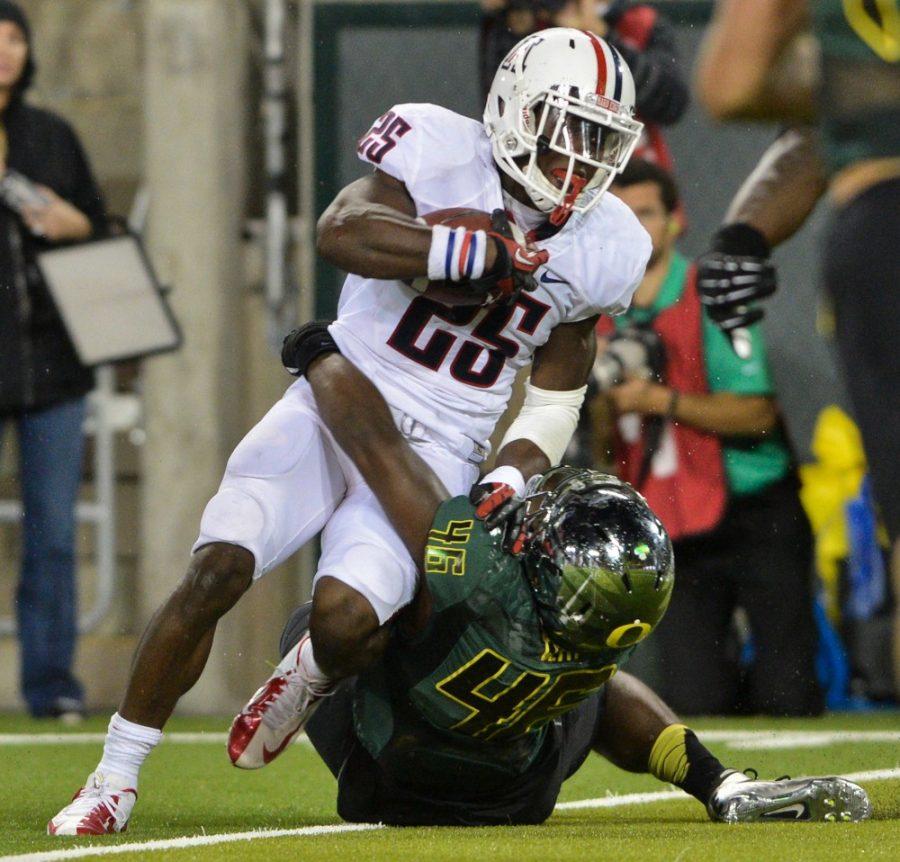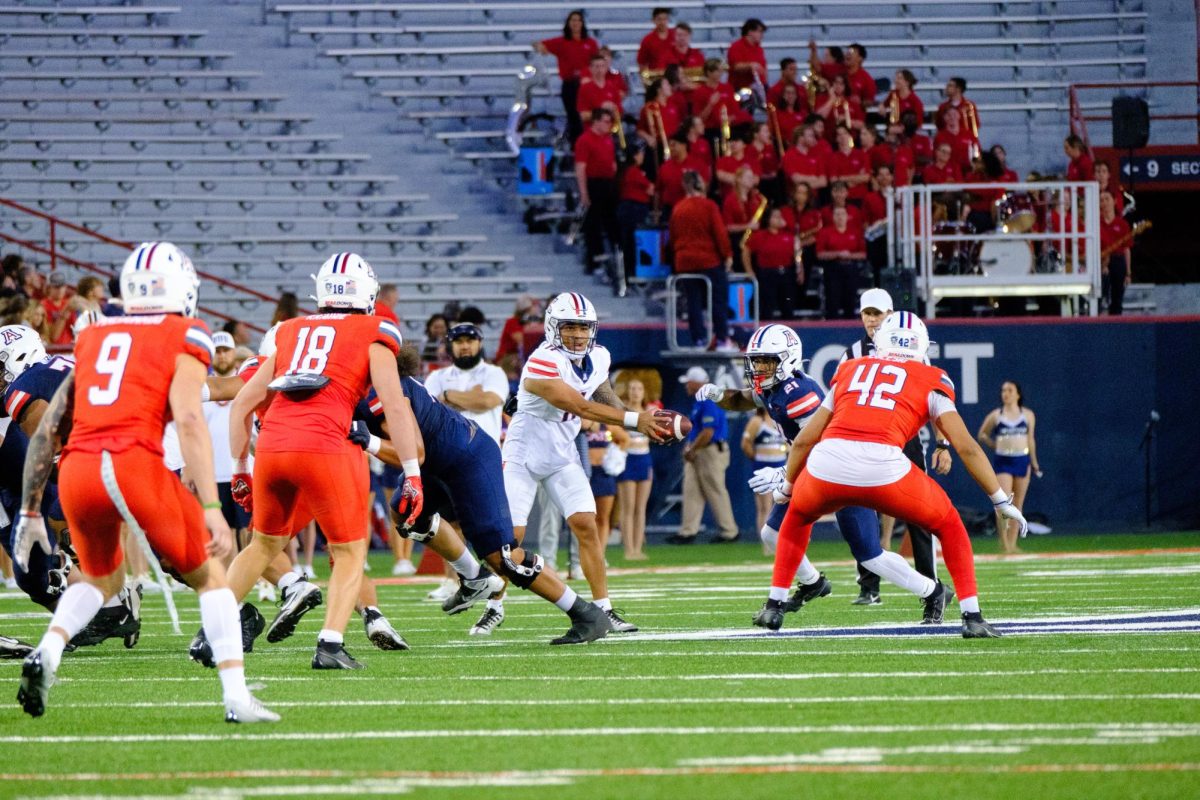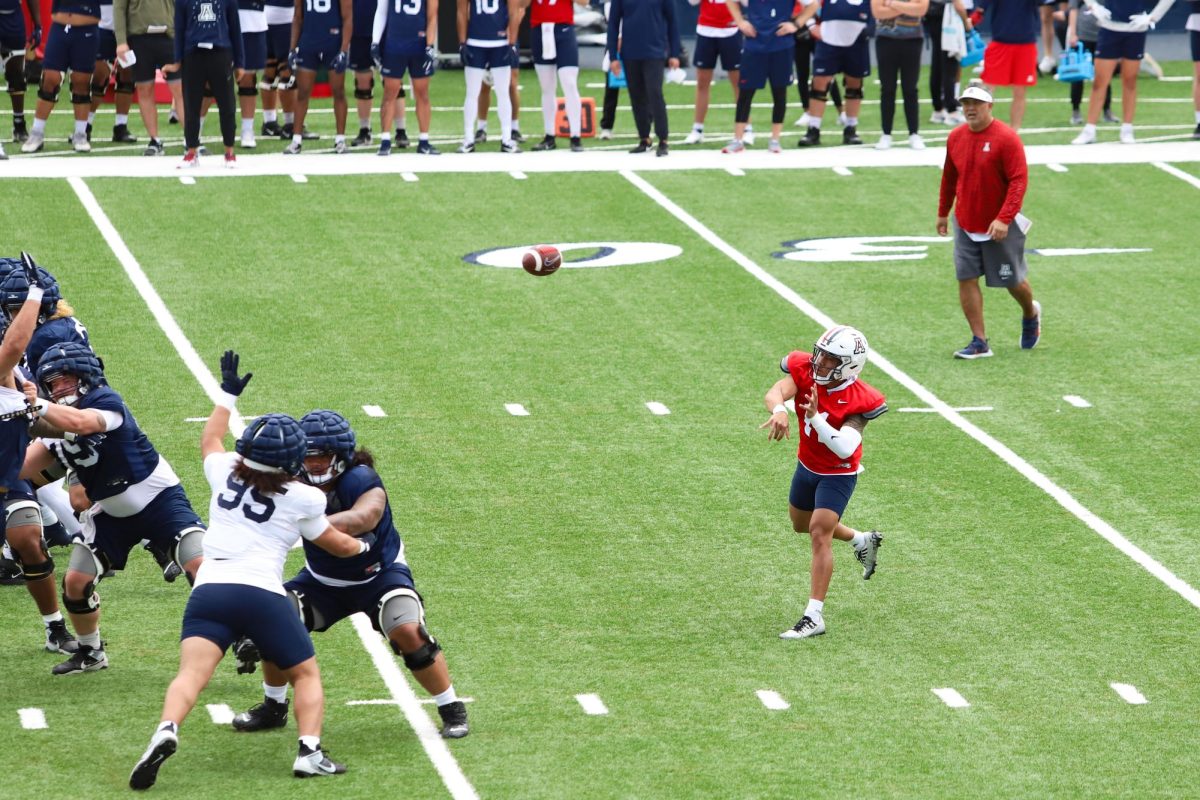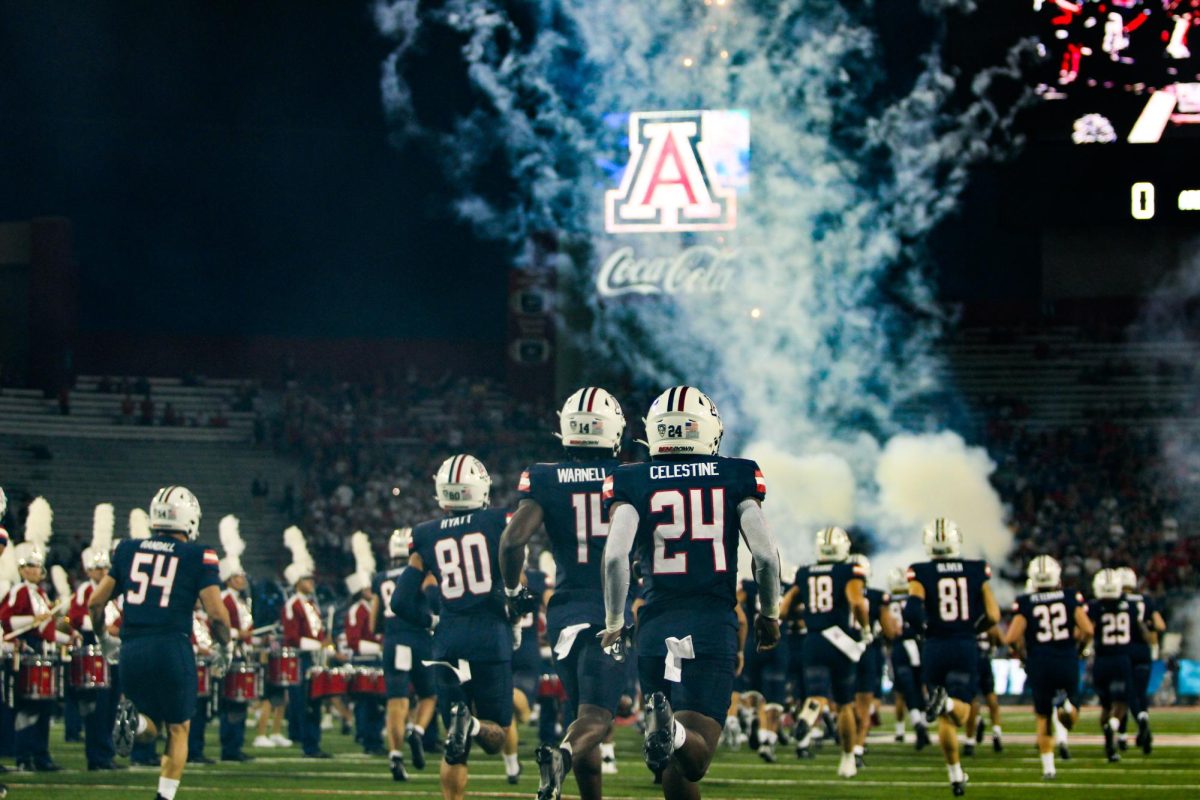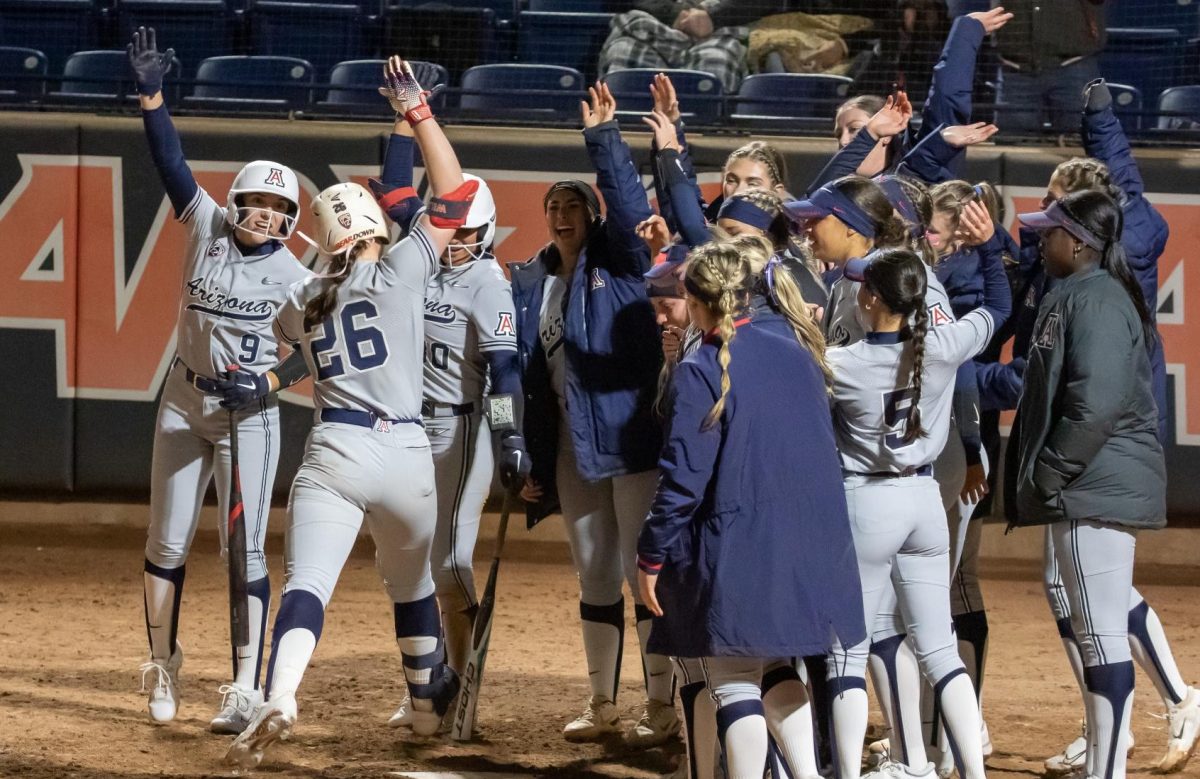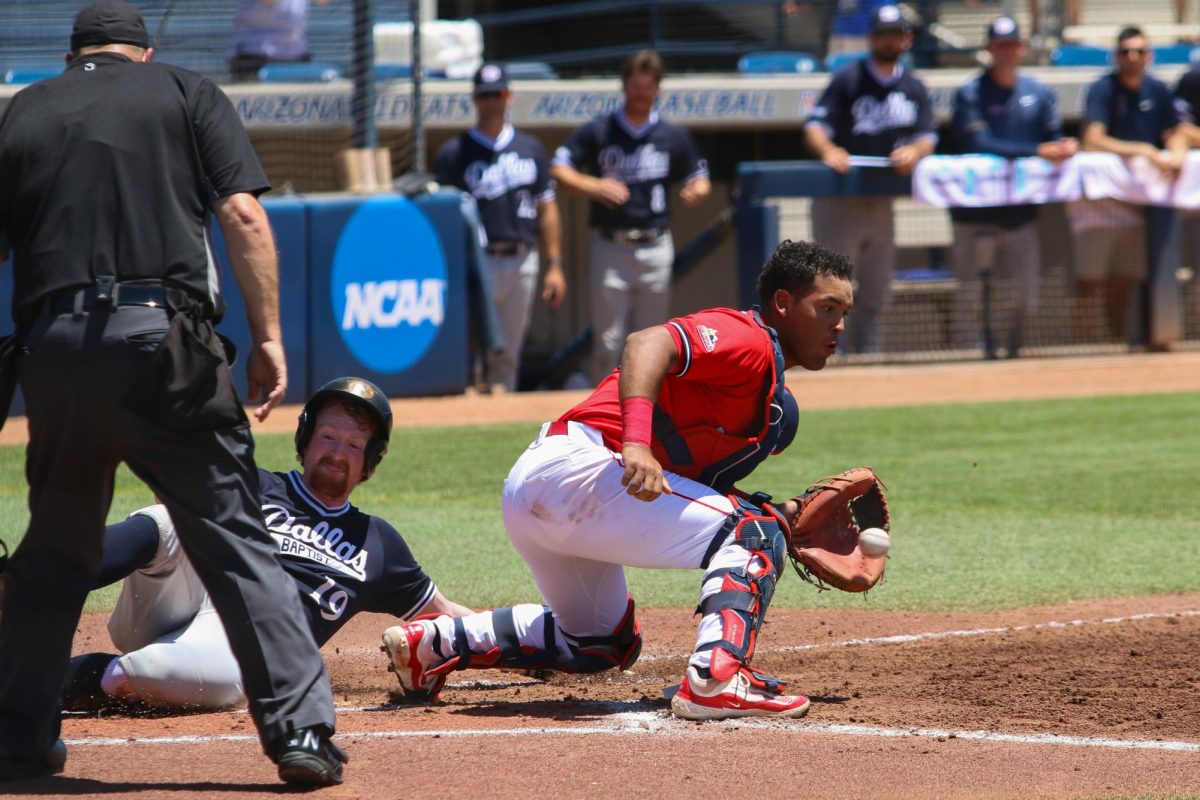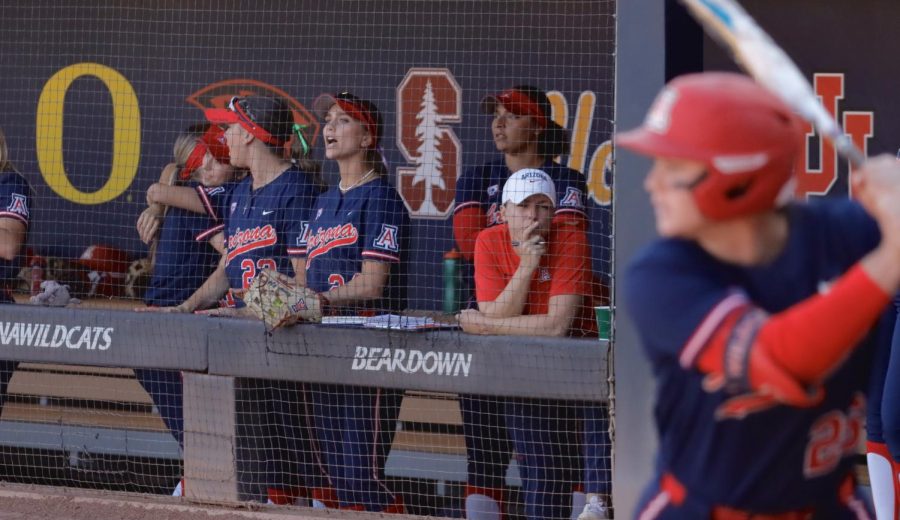In a matchup between Pac-12 rivals, it’s time to take a look at the good, the bad and the ugly in Arizona’s forgettable trip to Eugene, Ore.
The Good: Arizona’s run defense
The basic stats, 49 points and 495 total yards allowed, might not look good on the surface, but in reality the Arizona defense did everything it could to prevent the beat-down delivered by the Ducks on Saturday night.
Coming into the game, Oregon had one of the nation’s most feared ground attacks with senior Kenjon Barner and Heisman candidate De’Anthony Thomas delivering both consistent and game-breaking explosiveness. Arizona’s defense, on the other hand, was considered the weak point of the team, especially with its lack of depth at linebacker.
“Spur” safety Tra’Mayne Bondurant was flying all over the field and had a team-high three tackles for a loss.
Safety Jared Tevis continued his recent hot streak, forcing two fumbles and leading the team with 12 total tackles.
Barner and Thomas combined for 134 yards and no touchdowns and the team had 228 total rushing yards.
To get an idea of why those numbers are good, take a look back to 2011. Running back LaMichael James by himself had 288 yards on the ground, a school record, and the Ducks combined for 415 total rushing yards. Arizona may have been humiliated in Autzen Stadium, but the blame can’t be directed at the defense.
The Bad: Turnovers
In Arizona’s upset of then-No. 18 Oklahoma State, it didn’t turn the ball over once. Against Oregon it turned the ball over five times, all of which led to scores for the Ducks.
Quaterback Matt Scott completed 50 percent of his passes and wasn’t sharp all game. Even worse were his three interceptions, including one pick six at the start of the fourth quarter.
Backup B.J. Denker also threw a pick six straight to Oregon’s corner Troy Hill, who could have walked the ball into the end zone.
The Wildcats’ skill players contributed to the poor play, specifically receiver Johnny Jackson, who fumbled early in the second quarter with the game still at 7-0. Running back Ka’Deem Carey put the ball on the turf in the red zone, but right guard Trace Biskin at least recovered that fumble.
Of course, Scott threw his second interception two plays later.
The Ugly: Red Zone Efficiency
The stats say it all — Arizona went 0-for-6 in its red zone chances. Yes, you read that right, the Wildcats somehow managed to score zero points in its six trips within the Oregon 20-yard-line.
The Wildcats botched a field goal try, had another one blocked, threw an interception and failed to convert from a first and goal from two yards out — and that was all before halftime.
The Wildcat defense gave the team every chance to pull off the upset, or at least compete with the Ducks, but Scott and the rest of the offense crumbled under the pressure near the end zone.
Before Saturday, Arizona was 17-for-22 in the red zone with 13 touchdowns.
You can’t go 0-for-6 in the red zone, especially against Oregon, and expect to win.



